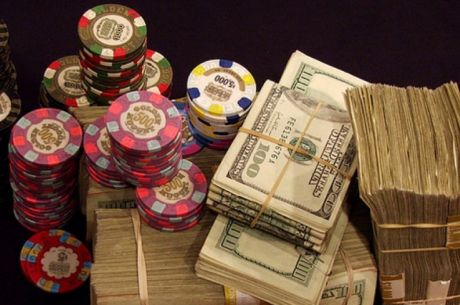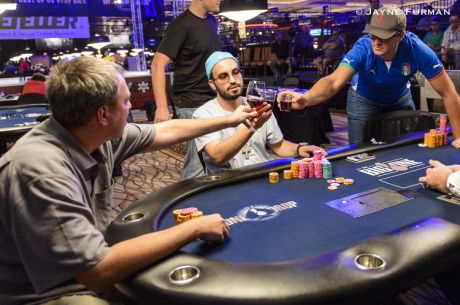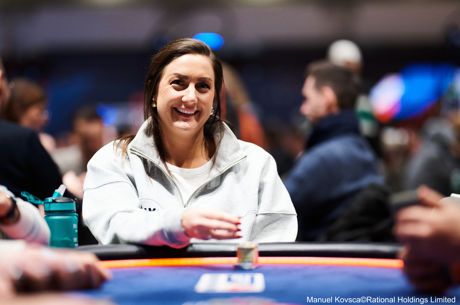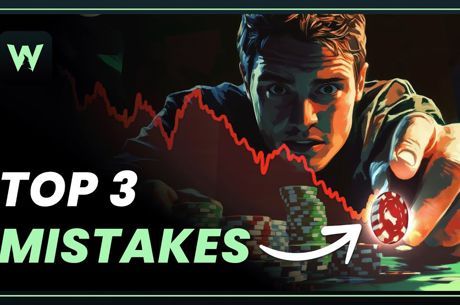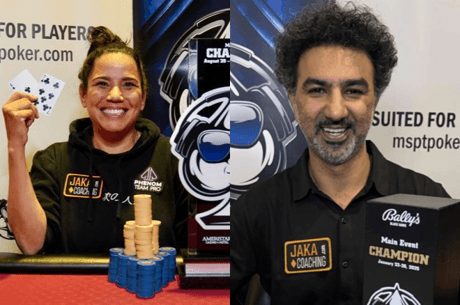Seven Dirty Poker Tricks (and How to Fight Back)
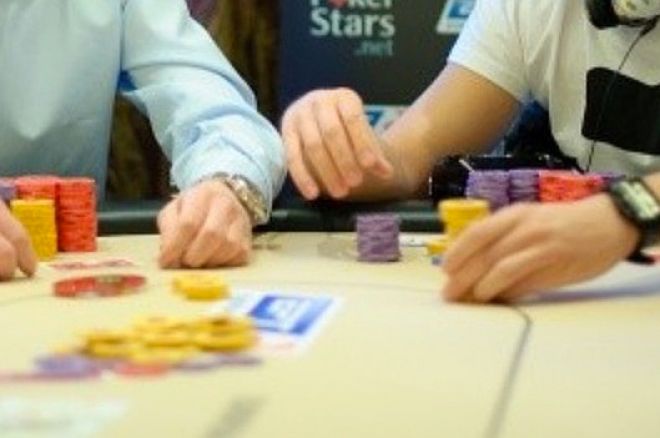
To “angle shoot” in poker is to take an action that is not technically against the rules, but which induces an opponent to take some desired action. Fortunately, there are usually easy counters to these moves, but you have to know about them in advance, or you’ll be made the angle shooter’s victim.
Here are seven such moves, along with some advice for not falling prey to them.
1. The pretend fold
Usually in preflop action, the angle shooter holds his cards and flicks his wrist as if he’s folding, but actually retains the cards. He hopes that others will think he actually folded, and act out of turn. If a few more people fold before action is halted, he will know that it’s relatively safe to raise, as there are now fewer potential callers. Conversely, if somebody raises, then when the order of action is straightened out, he will just fold.
To prevent him from succeeding, watch the action carefully. If Seat 4 does the fake fold and Seat 5 takes his turn, immediately speak up to stop others from following along.
2. The out-of-turn raise
This angle shooter is late in the order of action and wants either a free card or a free showdown. To prevent you from betting or raising, he announces “raise” or “all in” out of turn. He hopes you will think this was an innocent mistake, but become afraid to bet or raise because you think he’s going to reraise you.
Out-of-turn action happens all the time in live poker, and nearly always it is an innocent mistake. But if an experienced player suddenly makes this “mistake,” be suspicious that he’s putting a move on you. He doesn’t want you to bet or raise, so you should go right ahead. He’s likely to fold.
The standard rule is that if the action has not changed when it gets to the out-of-turn raiser (i.e., if you fell for it and either checked or just called a previous bet), then that player is committed to the raise. However, this is not the rule everywhere, and it is not always uniformly enforced even where it is the rule.
3. Not quite to the betting line
Betting lines on poker tables constitute a playground for the angle shooter. He may, for example, slide a stack of chips energetically to a spot just short of the line. He wants you to think this is a bet, a raise, or a call, depending on the situation. Depending on how you react, he will decide to either have it stand as if it had been a legal action, or protest that he had not actually put the chips into the pot.
For example, you bet on the river, and the angle shooter slides a stack as if to call. Thinking he has called, you show your cards. If the angle shooter sees that he is beat, he will argue that his action was not complete and he had not actually called. If he has the winner, however, he will scoop the pot and hope that nobody noticed that his stack never crossed the line.
The counter here is easy — if you’re paying attention. Just make sure to ask the dealer to clarify whether that player’s action is a bet/raise/call or not before you do anything in reaction.
4. Hidden money
This species of angle shooter intentionally hides high-denomination chips or cash behind his stacks so that they are not easily seen. When he has the nuts, he will move all-in verbally, without touching his chips. He hopes that you will underestimate how much he’s playing and call — at which point he will count down his stack, and you find out that you’re on the hook for much more than you had visually estimated.
Unfortunately, if you fall for this, there is usually going to be no recourse, unless the angle shooter is a known repeat offender and the poker room staff decides not to let him profit by his misdeeds.
Prevention is the cure here. If you notice anybody hiding chips or cash out of sight, whether it’s deliberate or not, point it out to the dealer, who will take care of fixing it before it becomes a point of controversy. And always be sure you have a clear view of all of an opponent’s chips and cash before you decide to call. If you ask for an actual count, and then the big chips come out of hiding, be afraid. Be very afraid.
5. Chip on the bottom
Closely related to that trick, this one is slightly less dirty, but can still fool you. This angle shooter doesn’t announce the size of his bet or raise, but slides forward a stack of small-denomination chips — with one big chip at the bottom of the stack. He hopes you won’t ask for an actual count and won’t notice the odd chip on the bottom before you announce a call.
Don’t fall for it. Get an exact count of the bet before making your decision.
6. The ambiguous check
This guy looks like he’s thinking about what to do, and absent-mindedly taps his hand on the table. If you check behind him, he may suddenly announce that that hand motion was not, in fact, a check, but just him thinking. Then he puts in a large bet, now knowing that you must not have a strong hand. Conversely, if you bet, he will likely fold quietly.
The remedy here is twofold. First, before you do anything, you can ask the dealer whether the movement you saw was that player checking.
Alternatively, if you check behind, and the angle shooter tries to bet, you can ask the floor for a ruling. Card rooms should use this rule: any hand motion that can reasonably be interpreted as a check will be so interpreted. Not all do this, however, so clarifying the situation before taking your turn is better.
7. Lost in translation
An angle shooter whose native language is not English has a monster hand on the river. You make a bet. He counts chips for a call, but before he puts them into the pot, he says, “I raise. No! I mean call!” This is followed by an apology about getting confused over the English words. He knows that his “raise” will be taken as binding, and will reluctantly put in more chips. If you are suckered by this drama, you lose more than you otherwise would have.
Some may recall Ivan Freitaz employing this move at the European Poker Tour Grand Final in Madrid in 2011 (eventually won by Freitaz). Because he was a repeat offender, the tournament director was able to tell his opponent that he tended to do this when he had a very strong hand. But you may not be lucky enough to get that hint about how to interpret what happened.
Conclusion
Most, though not all, angle shooters thrive on ambiguity. Don’t let them have it. Get any possible ambiguity cleared up, with the dealer’s assistance, before anything else happens, and you’ll be immune to most of these dirty players’ tricks.
Robert Woolley lives in Asheville, NC. He spent several years in Las Vegas and chronicled his life in poker on the “Poker Grump” blog.
Want to stay atop all the latest in the poker world? If so, make sure to get PokerNews updates on your social media outlets. Follow us on Twitter and find us on both Facebook and Google+!


